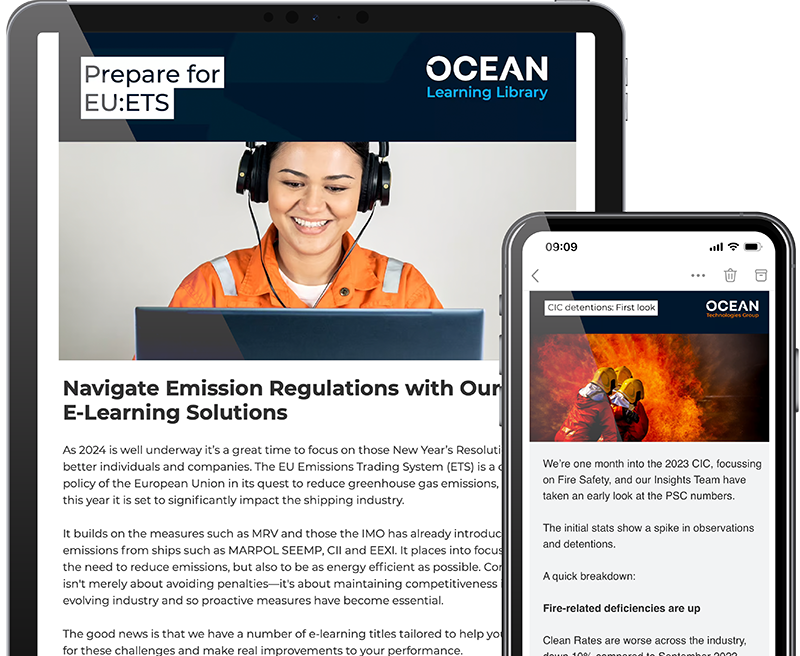Assessing and selecting a vendor for supply chain resilience
Many factors such as global events and regulatory shifts can threaten to disrupt supply chains, especially if your business relies on a single vendor. As single-source supply chains are left vulnerable to rising costs and bottlenecks, it can be a wise decision to diversify vendors for your parts and consumables, whether for peace of mind or as part of a strategic contingency plan.
Diversifying your vendor network can also unlock opportunities to optimise procurement processes, improve efficiency and lower expenses. Therefore, companies across the industry are innovating their approach to vendor assessment and evaluation to build stronger, more resilient supply chains.
The challenges
Of course, maritime supply chains are particularly sensitive to disruption, and finding the appropriate vendor demands high levels of scrutiny – a process which can be complicated and time consuming.
A prospective vendor needs to be assessed for their capabilities, quality, logistical reliability, and financial stability. They must also demonstrate legal and regulatory compliance, as failure to do so can result in penalties or damage the reputation of your business.
It is therefore important to minimise challenges by planning a consistent and efficient vendor assessment process suited to your fleet and your company. Digital solutions play a key role in streamlining this process, ensuring a thorough evaluation of potential vendors while saving time and reducing complexity.

Assessing vendors digitally
The best place to begin the assessment process is to plan a comprehensive checklist of criteria that reflect your company’s needs, values and policies. This list will then form the foundations of your vendor assessment and will likely include considerations such as:
-
Compliance and certifications
-
Quality
-
Performance metrics
-
Pricing structures
-
Contractual terms
-
Financial stability
-
Risk assessments
You may also choose to incorporate sustainability initiatives in your assessment metrics.
Once established, this framework can be digitalised, enabling you to create assessment templates which can be sent to multiple vendors in future. Using a procurement system like TM Master enables easy management and distribution, speeding up the evaluation process and ensuring consistency across all vendors.
TM Master offers three digital methods to assess quality and delivery of suppliers:
-
Supplier assessment: You create a questionnaire that addresses your key concerns, to be answered in your investigation into your vendor. You then assign a weight to each topic, directing the system to measure and grade each vendor.
-
Supplier self–assessment: Vendors complete a pre-set questionnaire, generated as an Excel file. Once the vendor returns the completed questionnaire, TM Master uses your grading system to automatically calculate a total quality score.
-
Delivery assessment: When testing a vendor through a purchase order, TM Master enables you to set benchmarks for how a purchase order is handled by a supplier up to delivery of an item, such as timing for order confirmation and shipping dates. The system will then automatically measure the performance of the supplier against these expectations, giving you accurate insights into their reliability.

Save time collecting vendor quotes
Traditionally, contacting individual vendors for quotes is a time-consuming process, involving emailing each contact, chasing them for a response, and managing multiple growing email threads with file attachments sent back and forth. Especially if your request for quotation is urgent, it is essential to find faster and more manageable methods.
By digitalising this process through a procurement system like TM Master, you can send requests for quotations (RFQs) out to multiple vendors simultaneously and directly from the system using pre-prepared templates. There is even the option to set auto-reminders to be sent if no response is received in a chosen period, saving you the task of chasing for replies.
TM Master further simplifies the process by allowing you to send automatically generated RFQs to vendors as an .xls file, which is completed and returned by the vendor and then imported, or through an integrated e-commerce platform, transferring it directly to the supplier’s stock systems. These methods avoid crafting individual RFQs for each vendor, plus removing manual transfers of information on either side, which also carries the risk of data input errors.
Find the best cost-savings
In global trading, it is very common to receive quotes from vendors based in different countries. This means each quote may be in a different currency, with varying shipping fees and taxes to also consider. Therefore, without a digital aid, it can be a complicated task to calculate and determine the best deal, with a high risk of error.
A digital procurement system can simplify this by enabling you to set up a base currency, so that you can import vendor quotes and convert them into a common currency. You can then compare vendors side by side with shipping and transaction fees included, helping you quickly identify the best deal.
In TM Master’s comparison table, calculations of losses and savings are displayed for each vendor choice you select. If a cost saving with a vendor depends on specific items in your purchase order, TM Master also enables you to split the order across different vendors to get the best deal.
Quality and reliability of vendors
As you work with suppliers, whether new or old, it is essential to monitor their performance on an ongoing basis. Regular evaluation helps you understand if a vendor’s reliability has deteriorated over time. Knowing this before placing an order helps you to measure risk and potentially avoid shipping delays or quality that would impact your operations.
In a procurement system like that in TM Master, each vendor is assigned a digital profile that is easily accessible and searchable. Each profile includes purchase history, quotes and quality assessment metrics for easy reference. At a glance, you see an overall quality score, determined by all the assessment metrics and purchase experiences logged over time. Negative experiences, such as delayed responses to RFQs, poor quality, or delivery performance, are automatically attributed to the vendor’s final quality score, helping you make informed decisions on future orders.

Ongoing digital evaluation of suppliers through TM Master enables you to strengthen relationships with reliable vendors while identifying and addressing performance concerns as they arise.
The results
Once you have built a strong base of suppliers in your digital procurement system, vendor assessment becomes a powerful tool for maintaining operational efficiency. Digitised and centralised evaluations, streamlined quotation processes, and optimised purchase orders enable quicker decision-making, reducing lead times and ensuring that critical parts and services are always available when needed. This enhanced procurement strategy mitigates the risk of costly delays and helps keep your vessels operational.
By maintaining clear visibility over vendor performance and leveraging digital tools for ongoing assessment, companies can foster stronger relationships with reliable suppliers while quickly identifying and resolving any performance issues. This not only boosts supply chain resilience but also gives your fleet the flexibility to adapt to evolving requirements and global market shifts. These capabilities are essential for operational safety, improving fleet reliability, and safeguarding your bottom line.
Find out more about innovating procurement processes with TM Master.

Want to be first to hear all our news?
Subscribe to our Newsletter to keep up to date!

